For the Compound Interest Treasury Notes authorized on March 3, 1863, interest ceased on June 10, 1867, and for those authorized on June 30, 1864, interest stopped being paid as of May 15, 1868. Most were redeemed at or near their expiration, with the result that by January 1, 1885, just $208,350 remained outstanding. If there was ever was a "dream note" series, the Compound Interest Treasury Notes would be a candidate for such. All are rare, some are very rare, others are extremely rare, and just about any or all are virtually impossible to find! Even a single note would be a highlight in an advanced collection. Remarkably and memorably, the Bass Collection offers examples of multiple denominations, the $10, $20, $50, and $100. Significantly, the Grinnell Collection offered $10, $20, and $50, but did not have a $100 note. While this series is not as extensive as the Demand Note sequence (varieties were not made with various city names for Treasury depositories), in their own right the Compound Interest Notes are similarly situated as being among the foremost American classics in the currency series. Many if not most collections do not have even a single note. The bronzed overprints or surcharges on these notes are rather "tender" (not legal, but from a tactile viewpoint), and we encourage the few other holders of such notes to consider contacting the CGA organization to preserve them in Mylar holders. 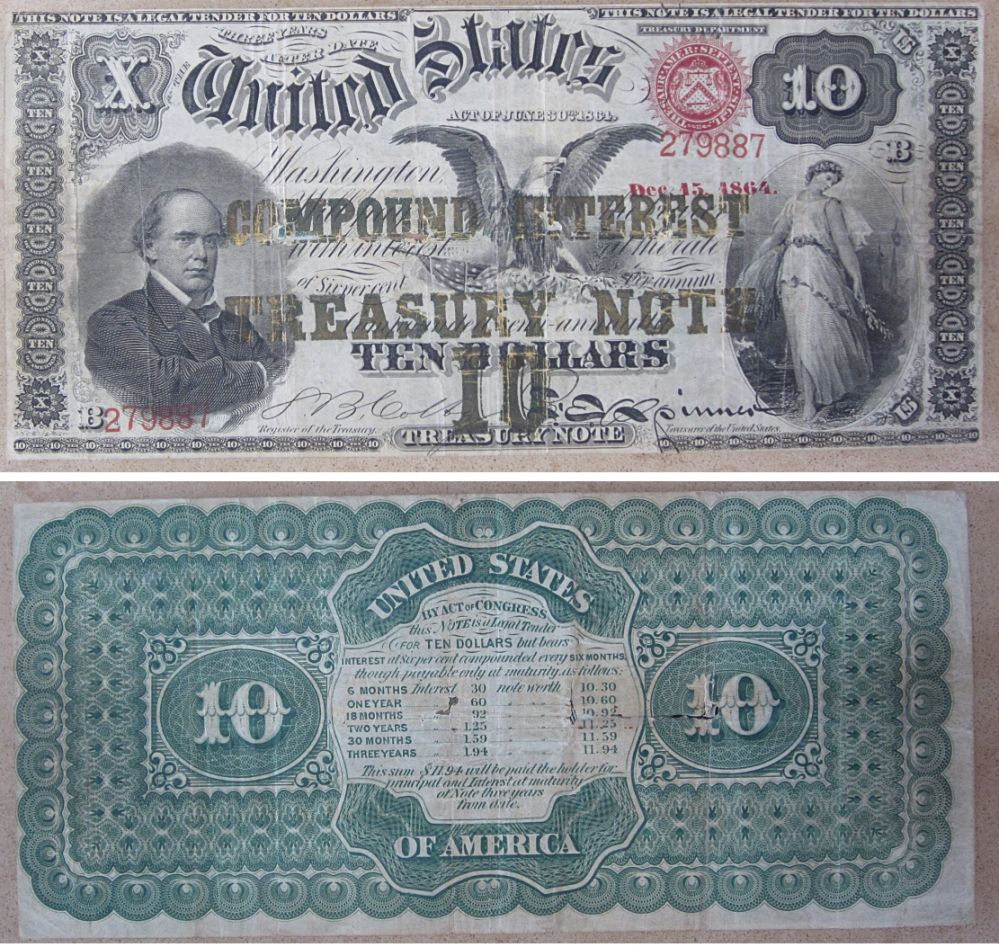 $1 SILVER CERTIFICATE (1896) PTB paid $4.10 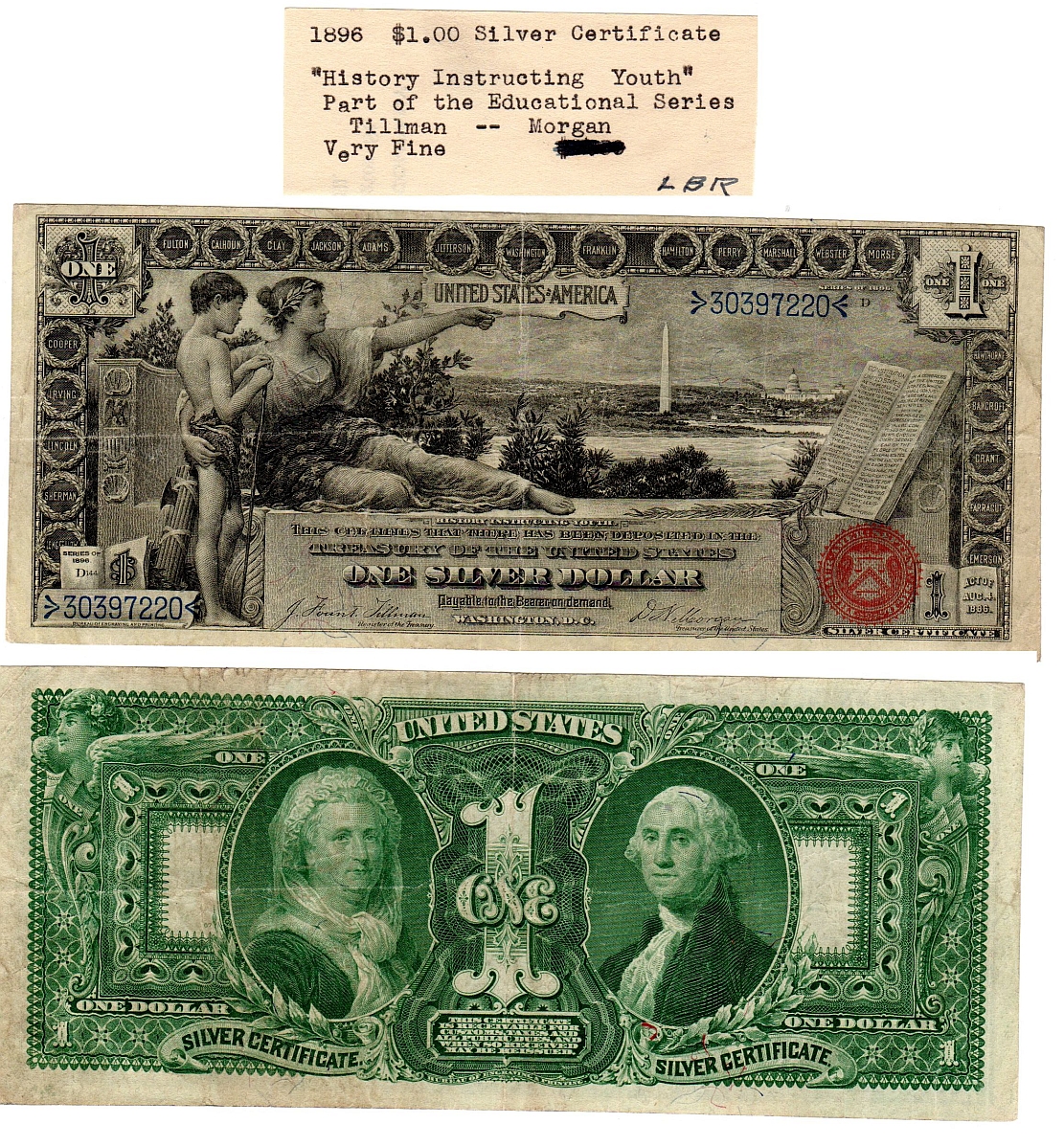 

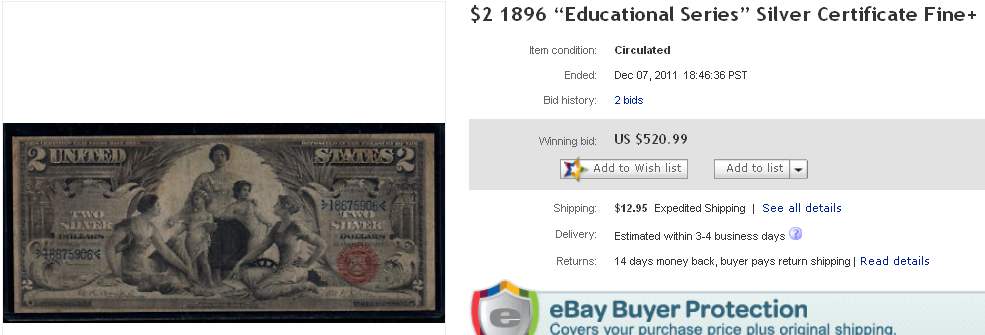
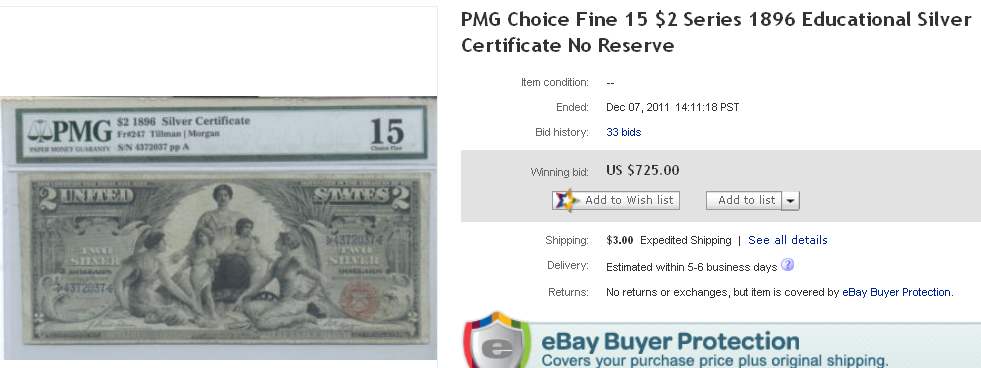
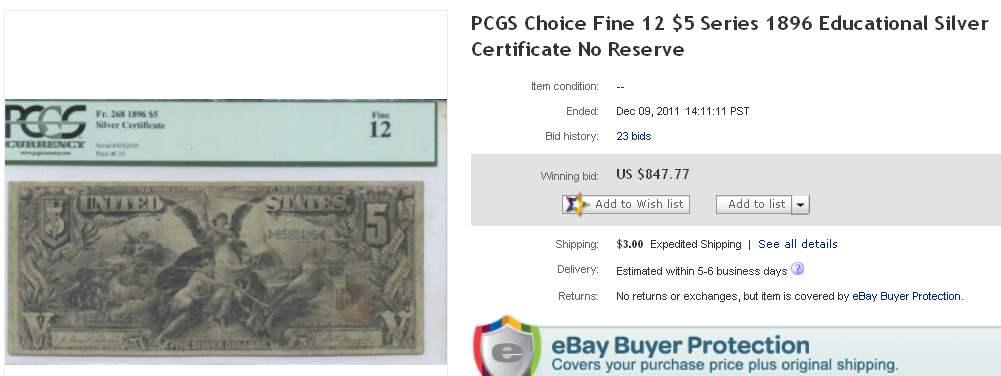
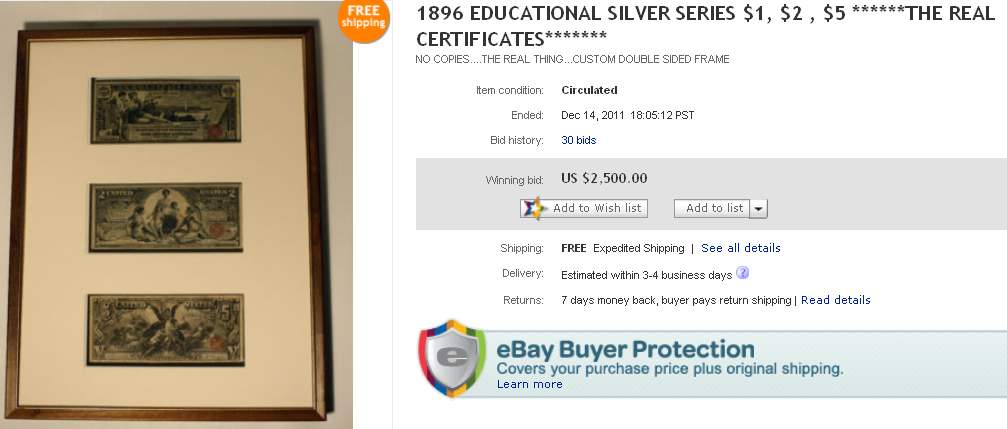
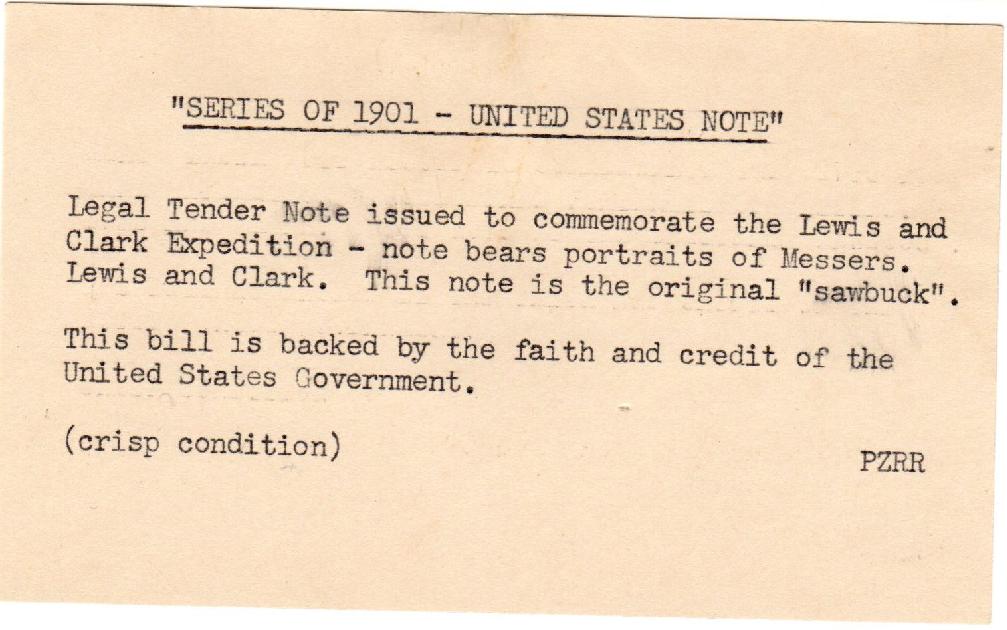
$10 bill (1862-3) series of 1901, Lewis & Clark legal tender (PTB paid $18.00) 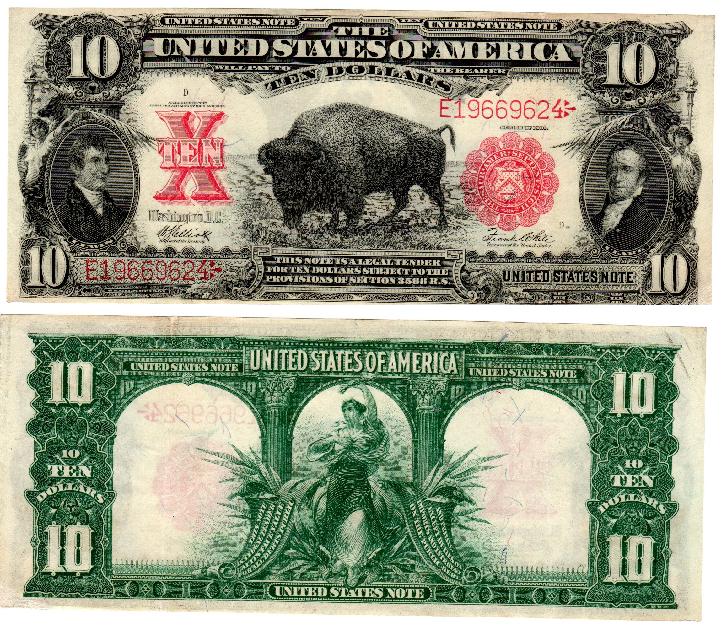
$10 (Lewis & Clark) 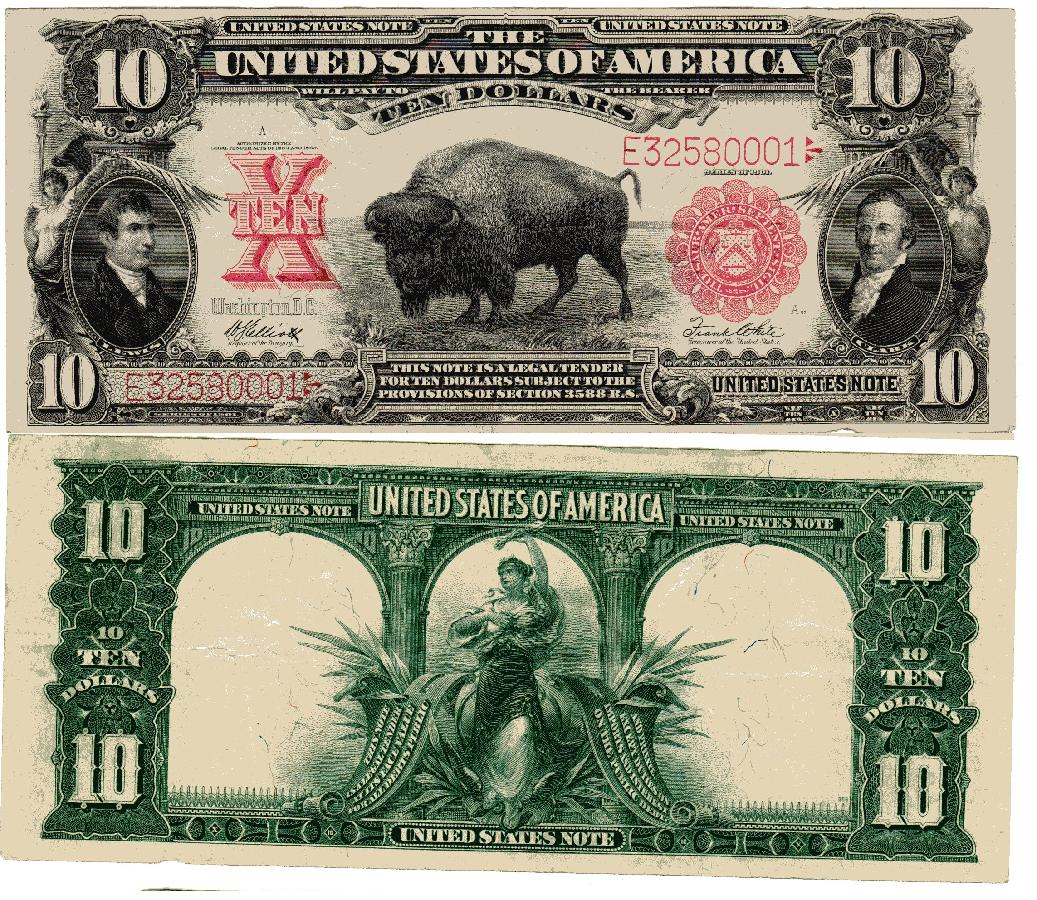 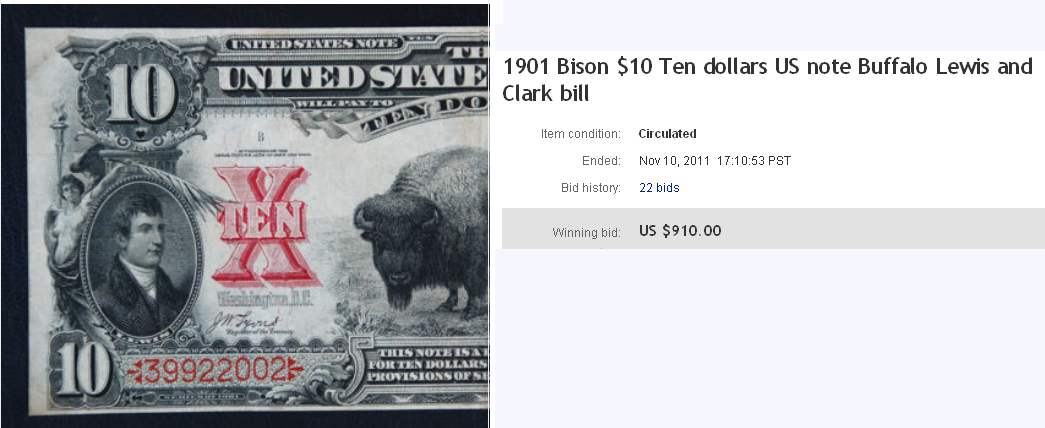

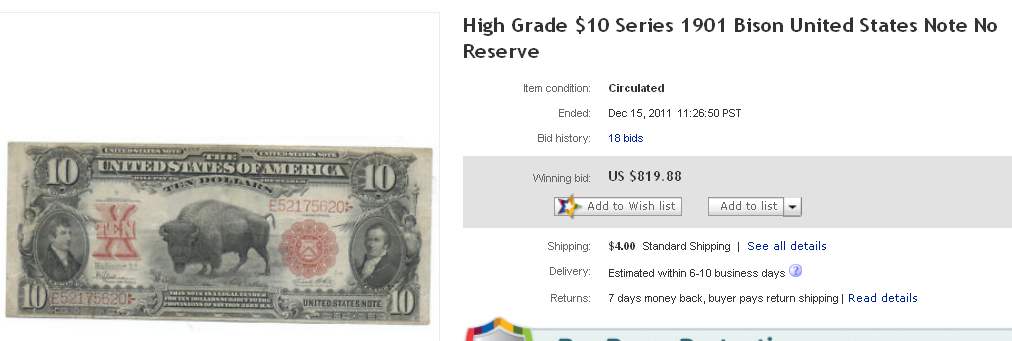
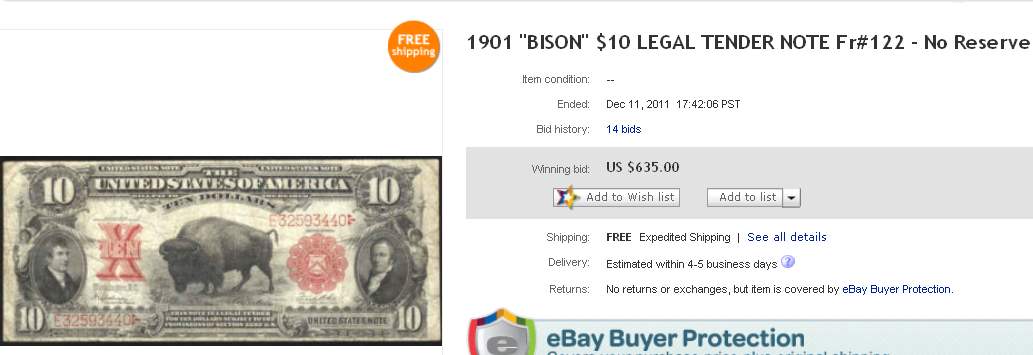
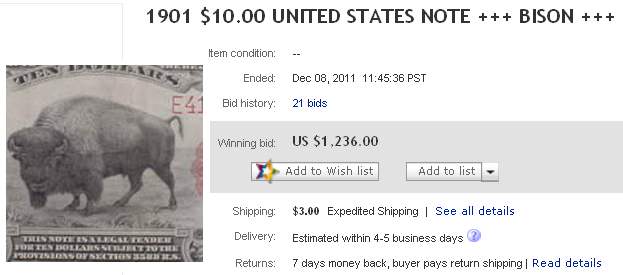
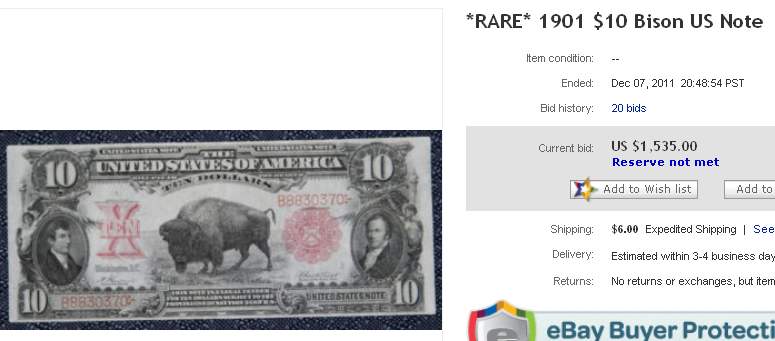
$20 National bank in Minneapolis note 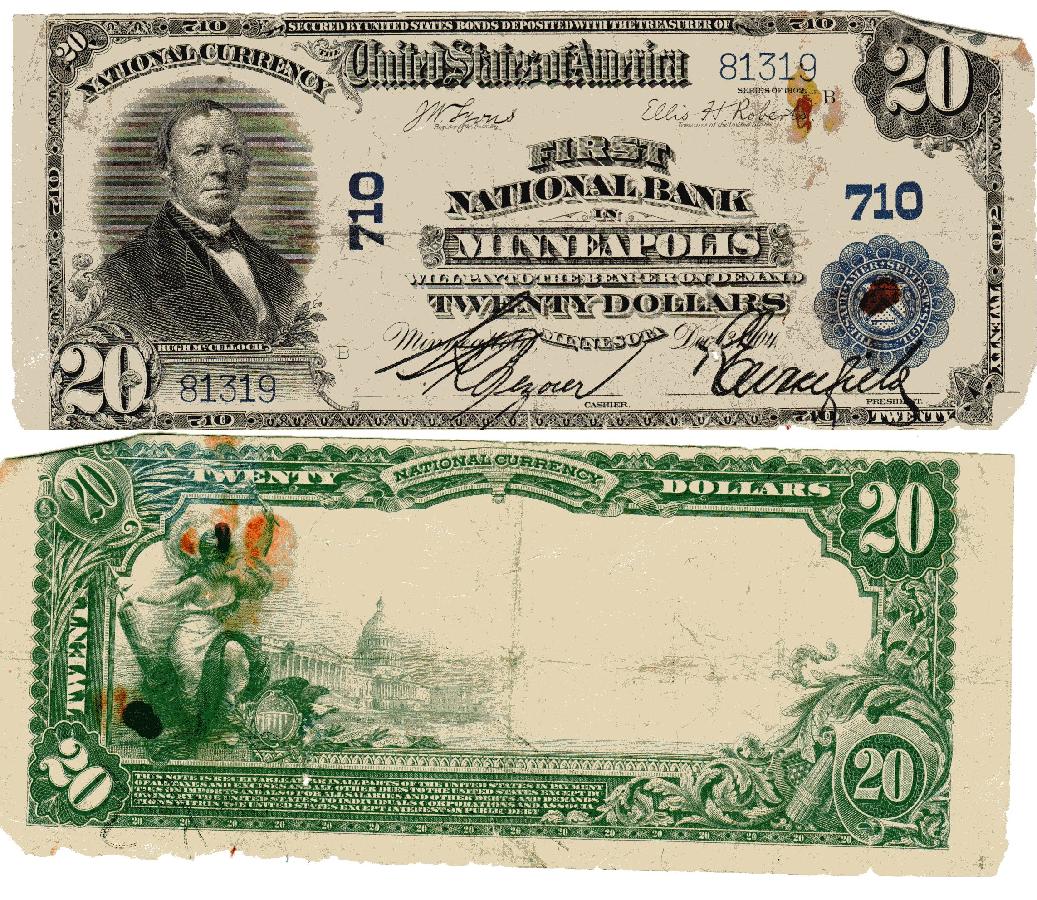 $5 note - woodchopper (portrait Andrew Jackson, extra info/PTB paid $7 (1907) 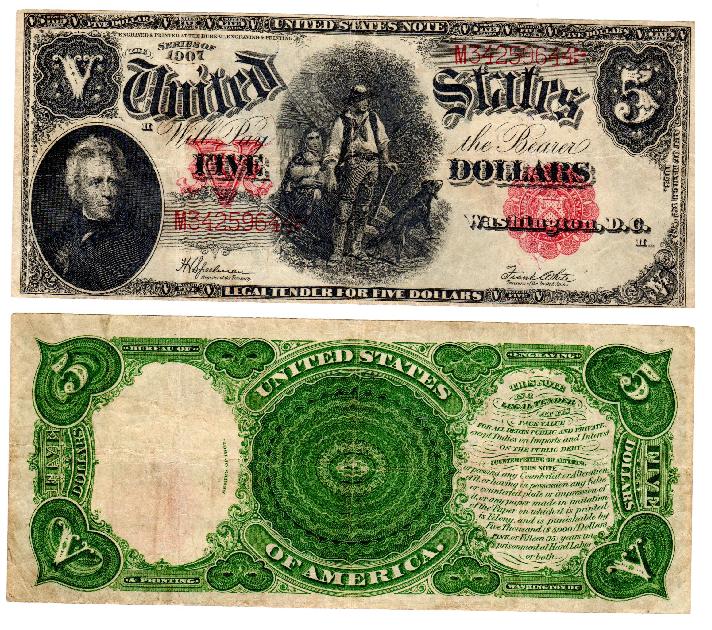
$20 Natl Bank Currency, series 1929, Jackson 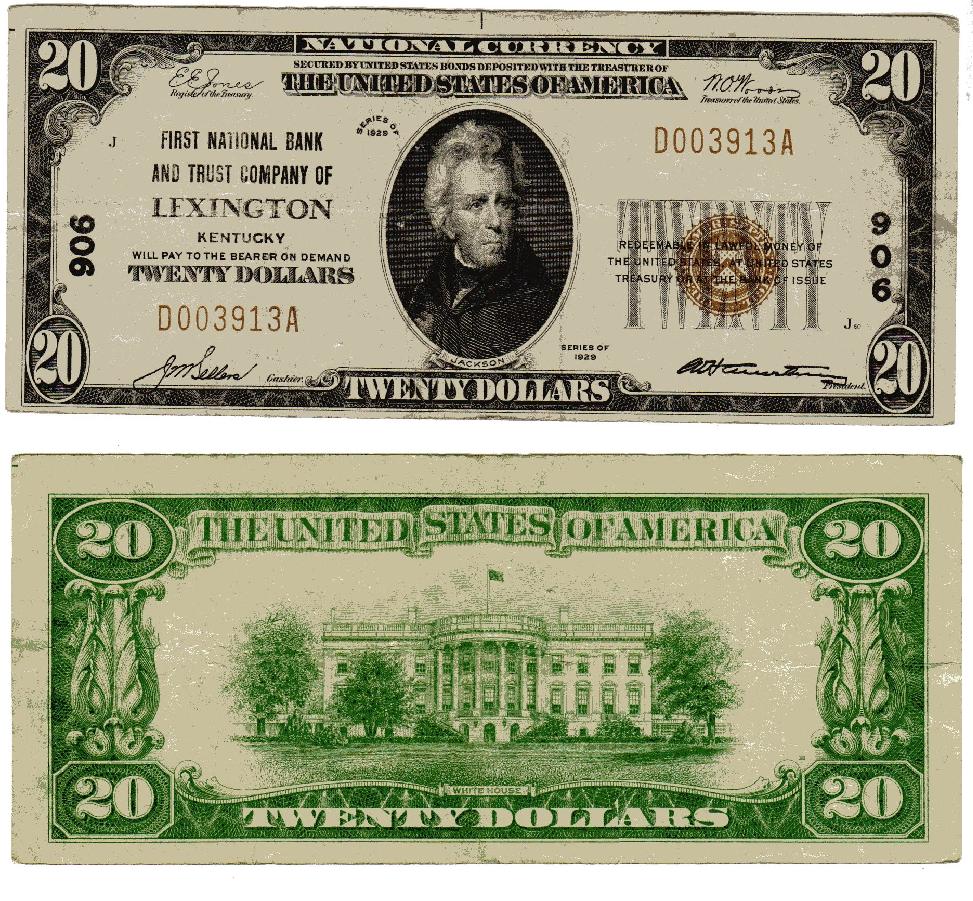 $3 note - Bank of Manchester, Michigan (1837) 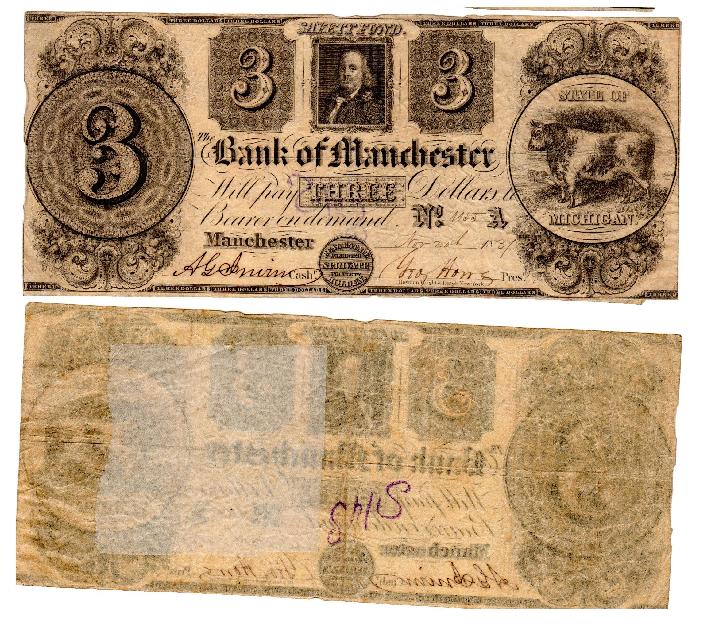
$10 gold certificate (Michael Hillegas) 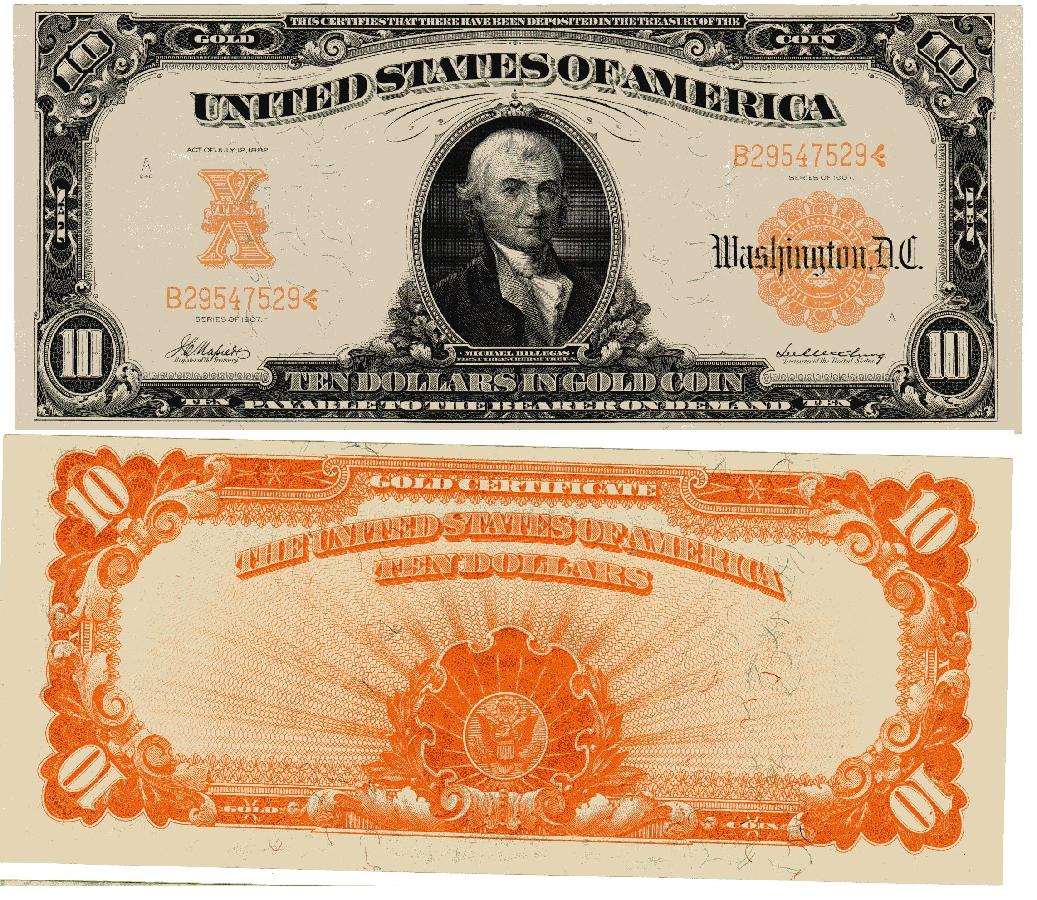 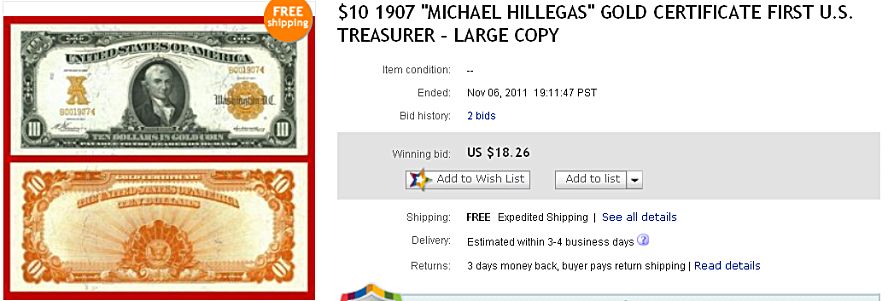 $20 gold certificate 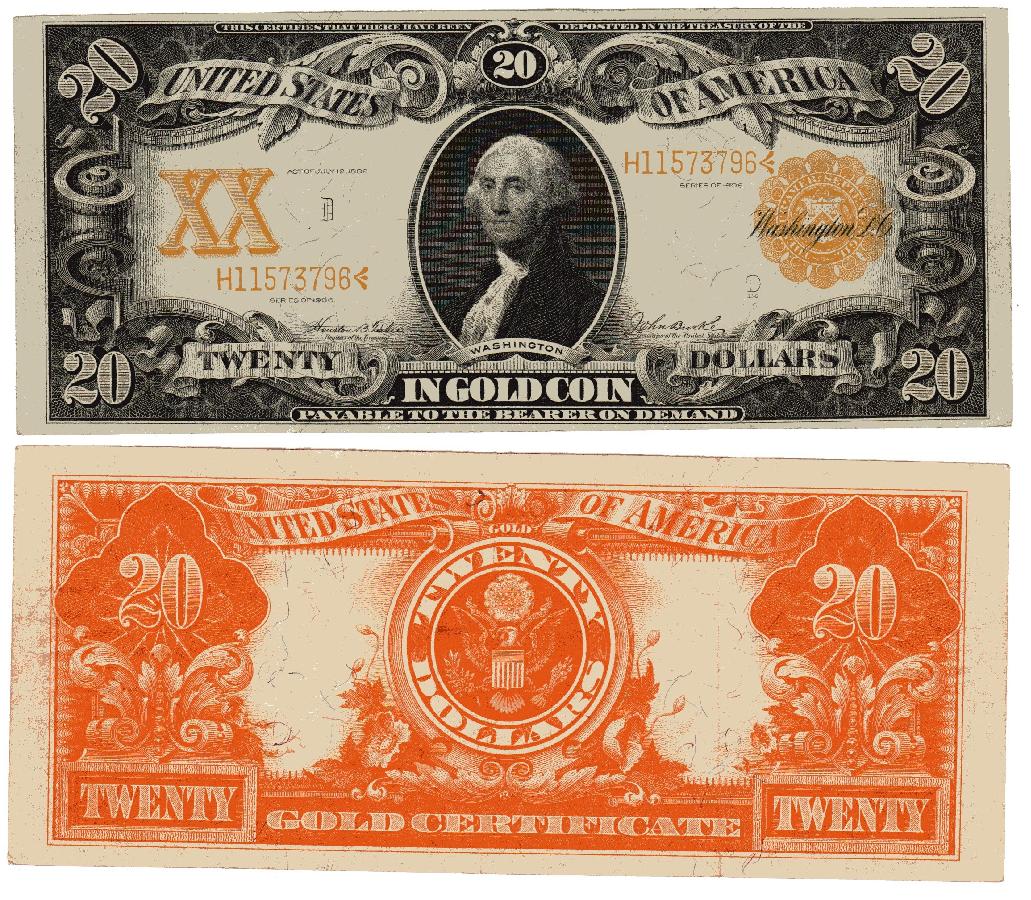 gold certificates (3 $10) 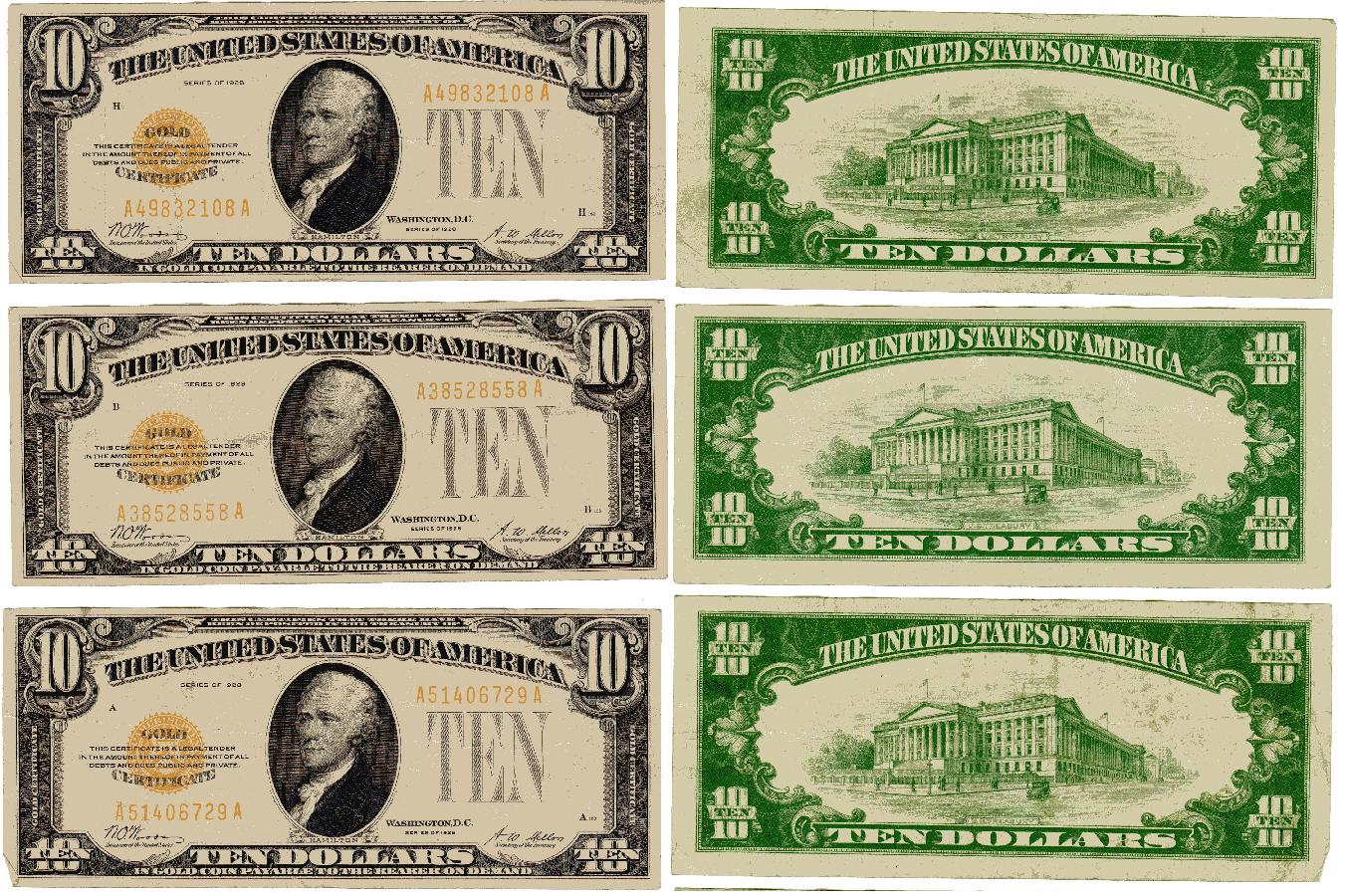 gold certificates (3 $10) 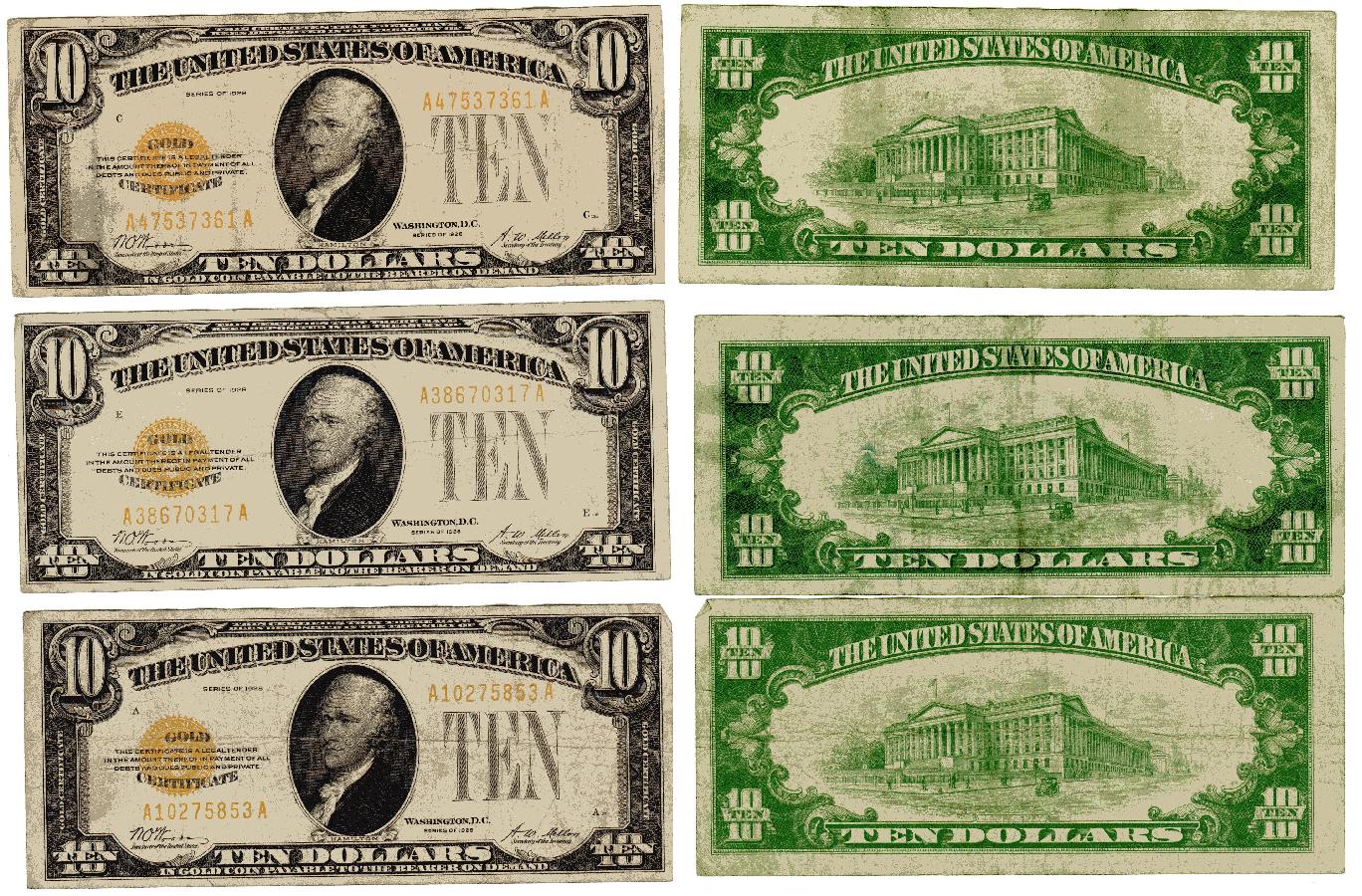 gold certificates (2 $20, 1 $50) 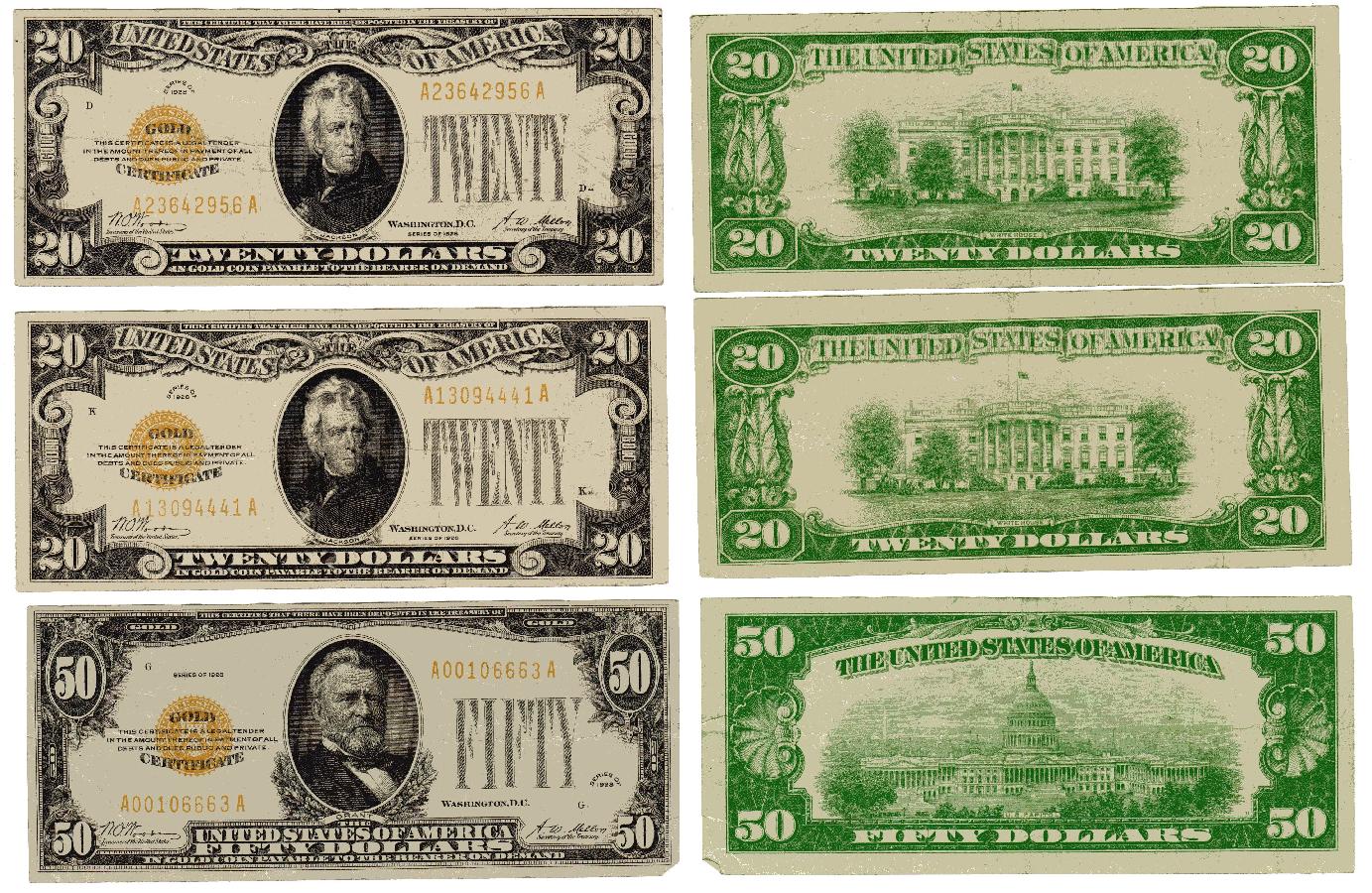 
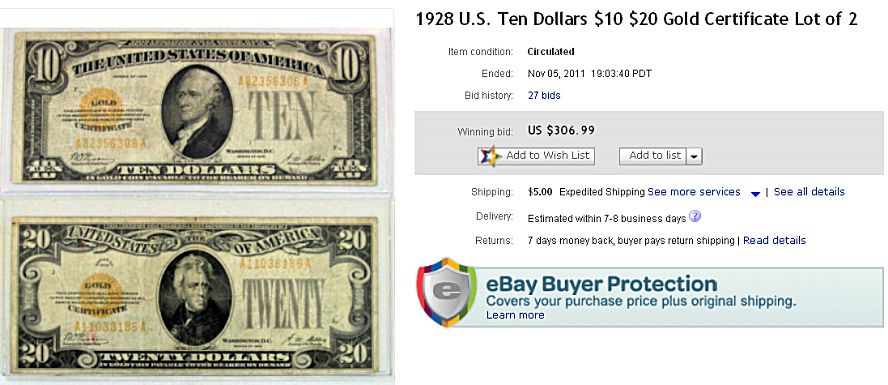
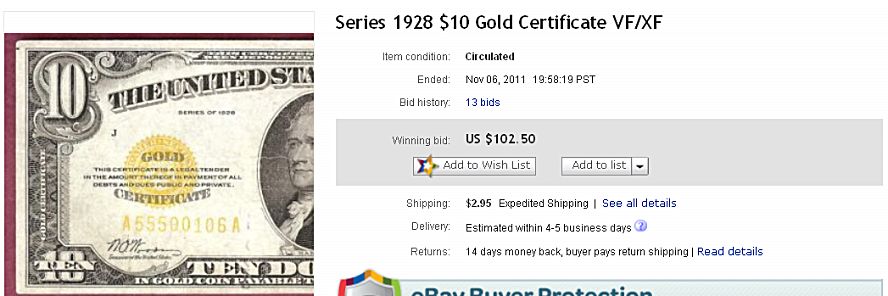





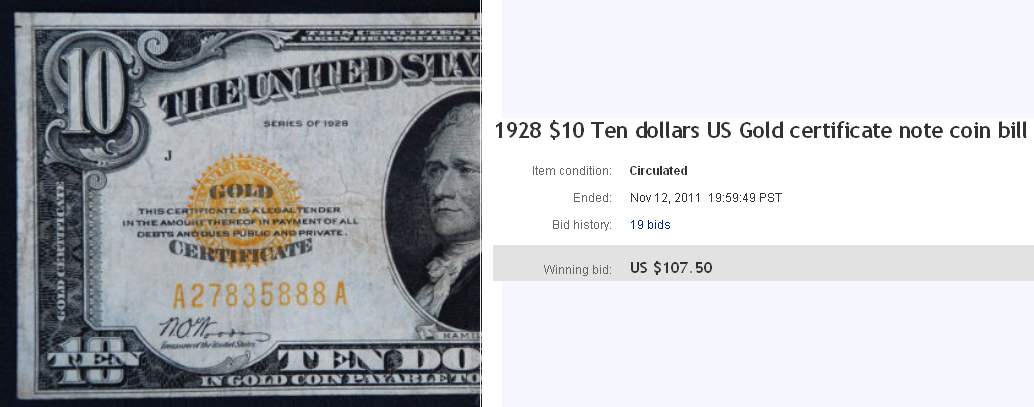
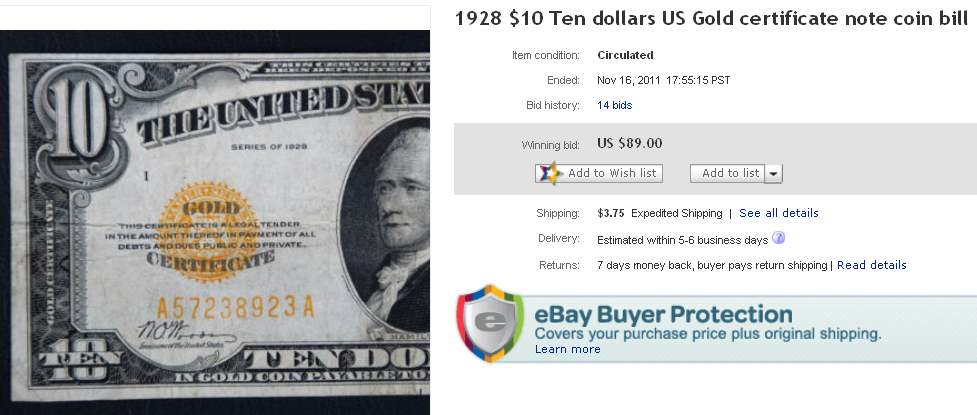



 Fed Reserve notes ($5 each)
Fed Reserve notes ($5 each)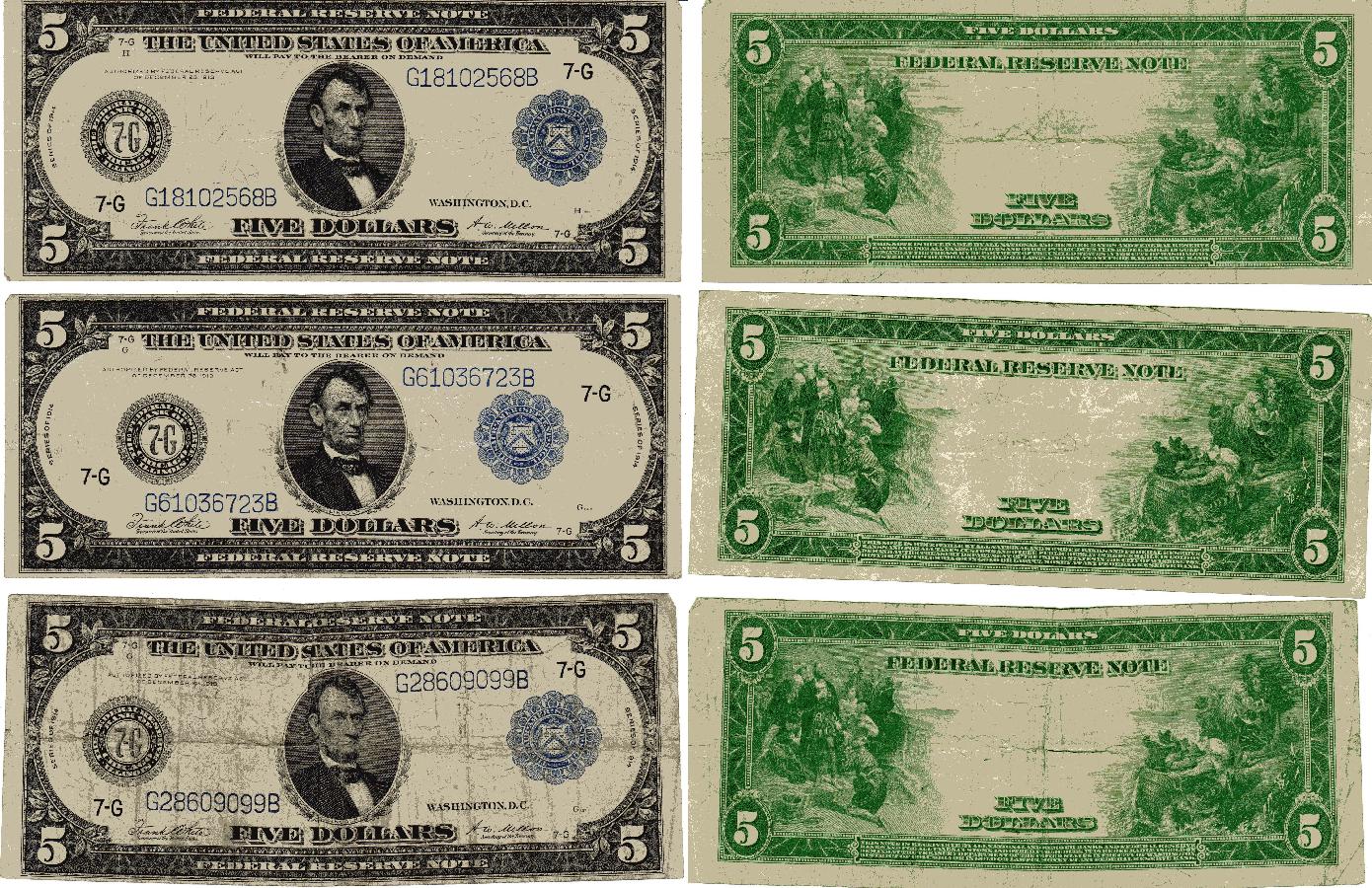  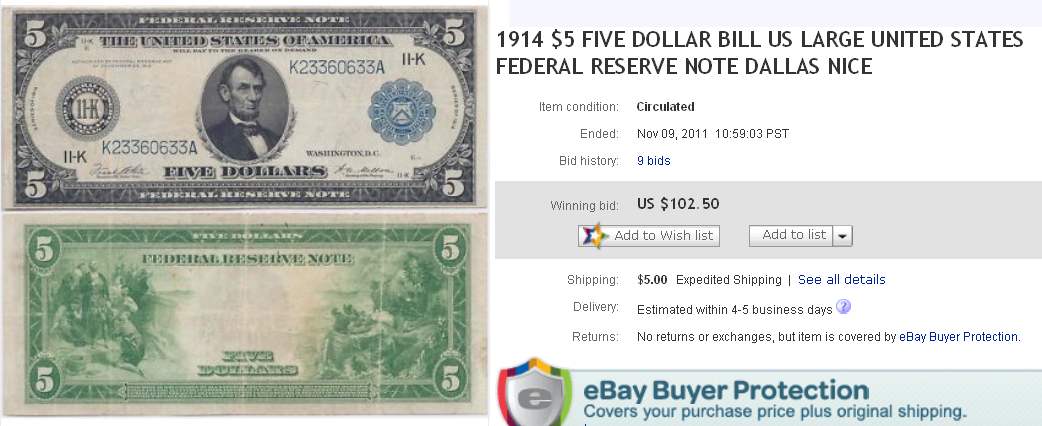  $1 silver certificate (1957) (2 bills) 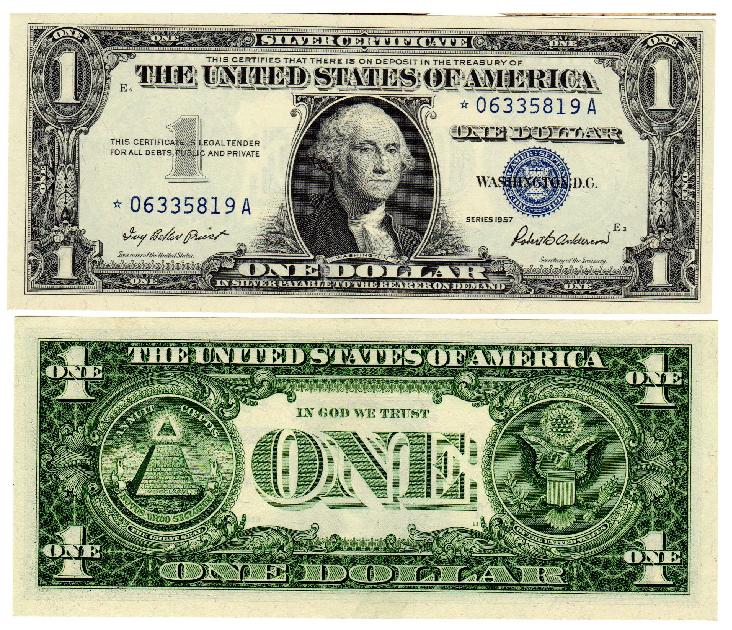
$1 silver certificate (1957b) (pack of 50 bills) $1 silver certificate, Hawaii (1935) From Wikipedia: "1942: A special emergency series, with brown serial numbers and "HAWAII" overprinted on both the front and the back, is issued. These notes are designed to circulate on the islands, and be deemed invalid in the event of a Japanese invasion." (This one is overprinted only on the back.) 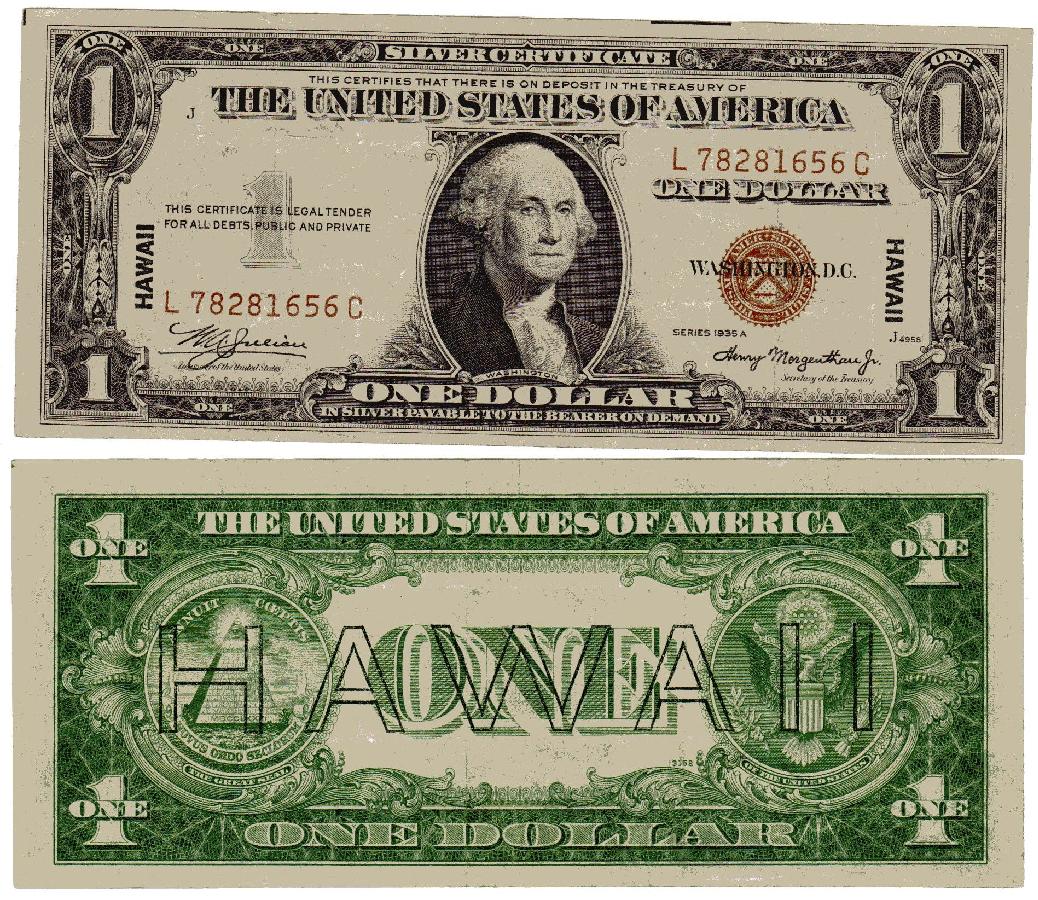 |